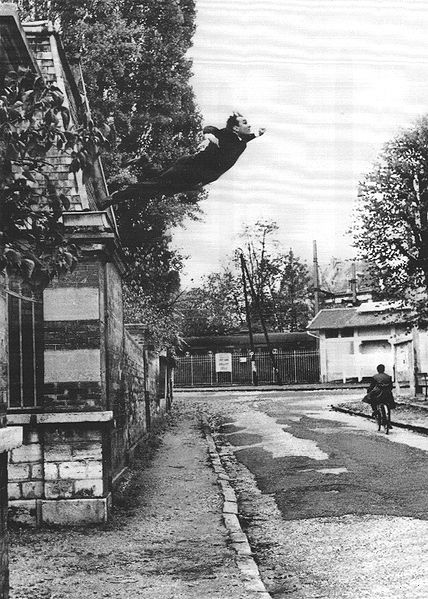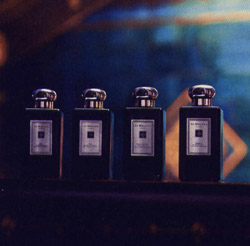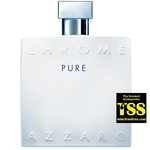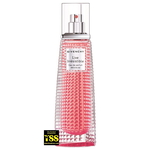The Latest Teachings in Perfumery are the Oxymoron and New Depth + Jo Malone Cologne Intense Collection (2010) {New Perfume} {Scented Thoughts}
 Le saut dans le vide / The Leap into the Void, with Yves Klein. By Harry Shunk via Wikimedia Commons.
Le saut dans le vide / The Leap into the Void, with Yves Klein. By Harry Shunk via Wikimedia Commons.By Chantal-Hélène Wagner
Lately, a number of perfumes have started trickling into the market which present a common point: the oxymoronic structure.They claim to be plausible combinations of lightness and depth using a different approach from that of the classical pyramidal structure starting with the fastest-evaporating notes at the top and drying down to the most lasting notes. Other prototypes approaching this description in the olden days would have been the genre of the "fresh Oriental" or that of the "ambery eau de cologne" (Cologne ambrée). It remains to be seen whether this approach is indeed reflected in novel olfactory impressions, or if the newness is to be found more in a discourse attempting to influence our perceptions of those fragrances.
What I find worth pointing out is that those fragrances more clearly indicate that there is a turning point and a distancing from the New Freshness of the 1990s (Nouvelle Fraîcheur) which emphasized a stretchable sense of transparency in an empty space, in opposition, say, to the sense you get from a perfume evolving in a richly furnished Victorian living-room cramped with trinkets. For lack of a better expression, the new movement could be termed "New Depth" for its oppositional and dialectal relationship to New Freshness. It is a return to skin. Whereas New Freshness made the human body feel more ethereal and weightless calling attention to the space surrounding it, New Depth is a return to a perfumery which is more about the immediacy of skin; it is therefore person-centric.
At the same time, dialectical progress has been made which creates a new synthesis trying to preserve both the teachings of old-school corporeal perfumery - in which lightness and depth are not ideologically separate - and New Freshness perfumery, which distinguished itself from corporeal perfumery by dichotomizing itself into pure- and ethereal-smelling molecules, offering as a result and in reaction to it it seems more recently, a New sense of Depth, or depth reclaimed...
So far this year in 2010, and with differing nuances, we have seen EauDemoiselle by Givenchy enter this category of New-Depth perfumes. In men's fragrances, there is a Solo Loewe Cologne Intense pour Lui.
Oriens by Van Cleef and Arpels attempted something akin to the concept of an oxymoronic structure, but displayed it into two parts; it may be seen to be either a variational structure in the New Depth movement or a transitional perfume revealing the tensions of the day. Lolita Lempicka Eau du Désir expressed the New Depth approach most explicitly in its advertising hinting at a melding of two opposites instead of an internal oppositional structure. Voyage by Hermès, although cultivating a sky-and-earth opposition ended up being a member of New Freshness, only magnified somewhat - stretched further in space - and complexified by the addition of a note of carnal sweat. Penghaligon's Orange Blossom would be New Depth in my eye, a thorough melding and synthesis of the teachings of New Freshness and Old School Corporeal perfumery. La Cologne du Parfumeur by Guerlain, interestingly shows, perhaps outside of its own structure, a sensibility moving in the direction of New Depth by relating the perfumer's gesture of using either the Eau de Cologne alone or blended with a deeper perfume to add depth to it. Finally, a whole new fragrance line has been dedicated to the concept of a deeper type of Eau de Cologne, called the "cologne absolue" by label Atelier Cologne.
This New-Depth group of perfumes seems to be strongly inspired by the idea of an overtake of the Eau-de-Cologne genre, fleshing it out in the hope of satisfying an increasingly sophisticated and educated clientele, with complex and eclectic tastes and who may want to experience sensations belonging to their own cultural generation instead of relying on passeism. The 18th century genre of the Eau de Cologne has witnessed a renaissance in the last few years with some early precursor entries preceding the more recent trend, such as Thierry Mugler Cologne and Cologne Bigarade by Editions de Parfum, both launched in 2001.
This oxymoronic tension interestingly is reflected in the field of beauty as well, with Coco Rouge by Chanel being a case in point. To some extent, this New Depth sensitivity belongs to a perfumery developed to cater to the felt needs of a transitional age group ensconced between childhood and adulthood - but it is not just that. Some may see an influence of youth culture and evaluate the movement as a by-product of agism but in my view and upon smelling some of those perfumes, it is clear that the genre is not just about coded social categories. It is about a renewal of aesthetic sensations. Orange Blossom by Penhaligon's, although it puts a tonic, curative spin on its New-Depth approach is really a perfect fusing of opposite sensibilities.
New Depth is about a renewal of our sensibilities. It is about the technological prowess of combining oxymoronic sensations which should not be in principle possible and replacing what would have been anihilated previously by creation.

Jo Malone is the latest name to throw their hat in the arena of this movement by relying on oxymoronic sensations with a quatuor called Cologne Intense Collection. It includes Intense Amber & Patchouli, Intense Oud & Bergamot, Intense Rose Water & Vanilla and Intense Iris & White Musk.
In this case, New Depth can be seen as the fusing point not just of two contradictory textures but of two cultural realms: the classic European genre of the Eau de Cologne indeed becomes fused with "...the great fragrance traditions and ingredients of the Middle East."
The collection is furthermore said to be inspired by Jo Malone Pomegranate Noir which the brand describes as "iconic" within their "very niche" brand image. It is interesting to note that. Indeed some of the iconicity of that perfume might be verified by looking at Oriens by Van Cleef and Arpels, which in attempting its New-Depth approach, seemed to be inspired by it.
The New-Depth perfumery movement offers much potentiality from the perspectives of creation, aesthetic contemplation, hedonistic and sartorial pleasure, and possibly from the economic angle as well in helping the fragrance market tighten its grip over the diluted number of releases.
It may be interpreted as heralding a shift in the direction of encouraging a more exclusive relationship to fewer perfumes by seeking to be more completely satisfactory.









